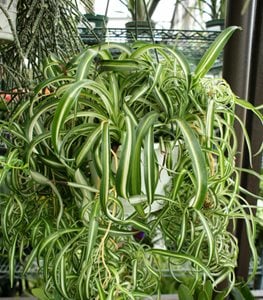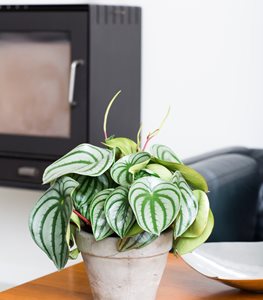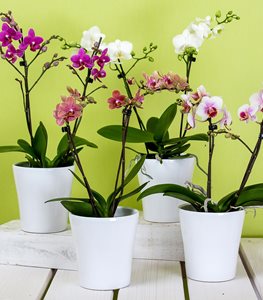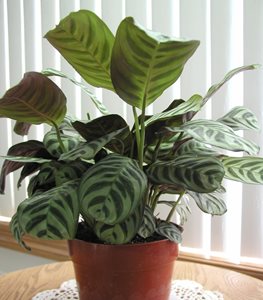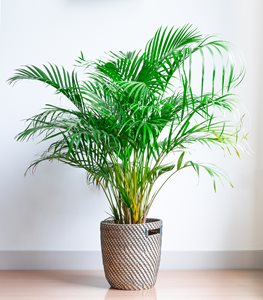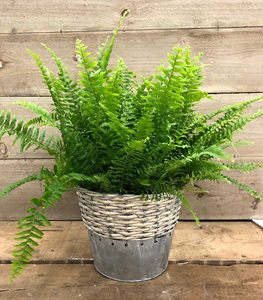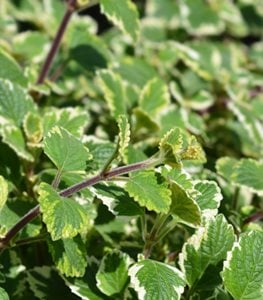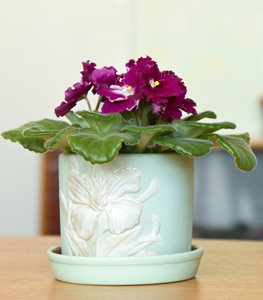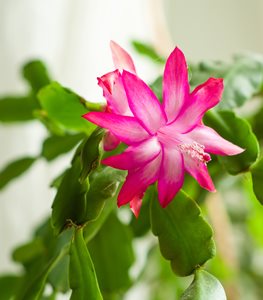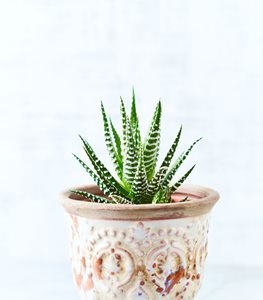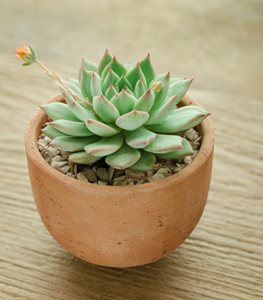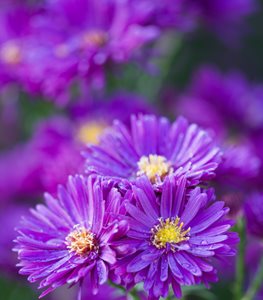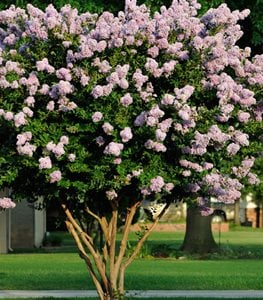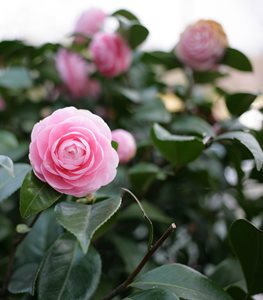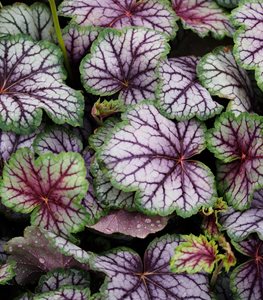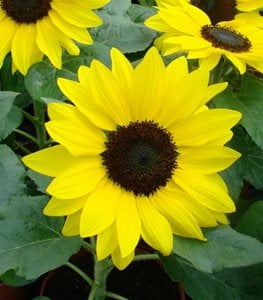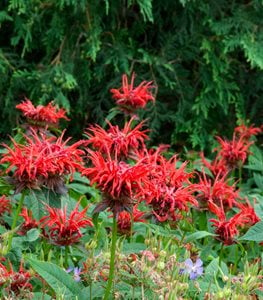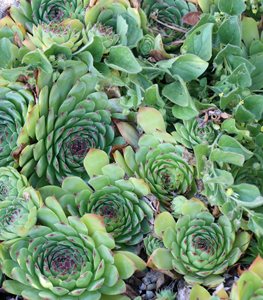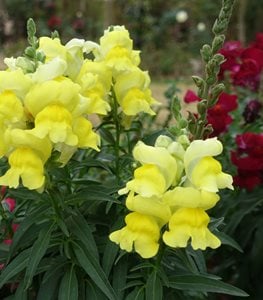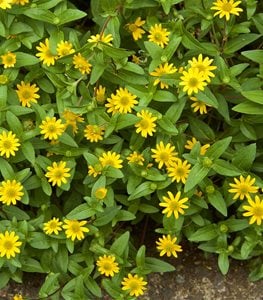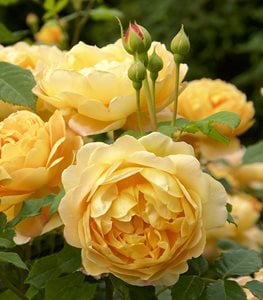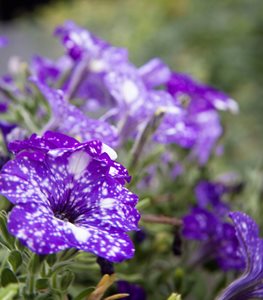COMMON PLANTS SAFE FOR CATS AND DOGS
Keep pets from getting sick by choosing plants that won’t harm themThere are many things that enhance our lives, among them our pets and plants. To establish a happy co-existence, it’s important to make sure that plants are safe for your four-legged friends. Though it’s common for dogs and cats to chew or ingest plants, the reasons aren’t always clear. It may be to calm an upset stomach, to help process hairballs, or be a response to a nutritional deficiency. Some pets like to chew plants while playing. Whatever the reason, choosing plants that are non-toxic to your pets will help keep them from getting sick, as well as ease your mind.
Even safe plants can cause minor discomfort if ingested, though effects are usually temporary and not reason for concern. Keep pets away from plants if they show interest, not just for safety, but to keep plants from incurring unsightly damage. If your dog or cat is prone to chewing, set out a pet-friendly choice such as organic wheat grass for them to nibble on. Here are some indoor and outdoor pet-friendly plant choices that will give you peace of mind.
On this page: Pet-Friendly Indoor Plants | Pet-Friendly Outdoor Plants | Additional Tips
Also see: Common Poisonous Plants for Dogs & Cats
INDOOR PLANTS SAFE FOR CATS & DOGS
Houseplants are not only uplifting during winter months, they help purify the air indoors as well. Studies show that having plants in our home enhances our mood as well as the decor. Here are some houseplants you won’t have to worry about when it comes to your pets.
SPIDER PLANT
Grown for its variegated spiky foliage and endearing baby plantlets, spider plant (Chlorophytum comosum) has long been a standby of houseplant lovers. Also known as airplane plant and ribbon plant, this tropical African native is forgiving of neglect and poor conditions, making it a good choice for novice gardeners. The grass-like leaves are particularly appealing to pets who like to chew, but all parts of the plant are safe.
Learn more about growing spider plants.
PEPEROMIA
The attractive fleshy leaves of radiator plant (Peperomia) come in a myriad of shapes and patterns, making this a versatile design choice as living decor, from small tabletop accents to hanging planters. All species are non-toxic to cats and dogs. Because they grow as epiphytes (without soil) in their native rain forest habitat, radiator plants have small root systems, so they prefer smaller pots with well-draining soil. These tropicals, which go by a host of other common names depending on the species, prefer bright indirect sunlight and humid conditions, though they are drought-tolerant as well.
Learn more about growing peperomia plants.
ORCHID
One of the most familiar orchids grown as a houseplant is moth orchid (Phalaenopsis). Popular for its long-blooming flowers and ease of care, there’s a wide range of flower shapes, colors, and patterns to match any decor. While this common orchid is safe for pets, the bark-based potting medium that it’s grown in can cause discomfort if ingested. Plants may also carry fertilizer or pesticide residue that can present a danger. If your pet is especially inquisitive and prone to chewing, it’s best to keep these orchids out of reach, such as on a high shelf or in a room that’s off-limits.
PRAYER PLANT
Grown for the vividly patterned leaves that fold upwards at night (hence the name). Most prayer plants come from the Maranta genus, and others (also called peacock plants) come from the Calathea genus. Both are great choices for rooms with low light and are safe for pets, so you can be confident in placing them anywhere in the house. Since plants remain compact (around 8 to 10 inches tall and wide), they are ideal for small spaces such as bookshelves or end tables.
Learn more about growing calathea plants.
PALMS
Some of the best plants for sheer elegance and an exotic look, many outdoor palms can also be grown as houseplants. While some varieties such as sago palm are toxic to pets, many others are safe. Parlor palm (Chamaedorea elegans), bamboo palm (Chamaedorea seifrizii), Areca palm (Dypsis lutescens) and ponytail palm (Beaucarnea recurvata) are just a few that won’t harm pets if any part of the plants is ingested. Since safeness depends on the type of palm, make sure to research thoroughly before buying.
BOSTON FERN
Some ferns have toxic properties, but others such as Boston fern (Nephrolepsis exaltata) are perfectly safe for pets. While the lush fronds are pretty to look at, they are also appealing to dogs and cats who like to chew. Fortunately, no parts of the plant are harmful. These attractive ferns look great in a hanging basket, so set up a vintage macramé hanger out of reach of curious pets and place in a corner of a den or living room where you’ll most enjoy it. Since Boston ferns like humidity and bright, indirect light, bathrooms are also a great spot for them.
SWEDISH IVY
The round scalloped leaves and trailing habit of Swedish ivy (Plectranthus verticillatus) make this a perfect choice for hanging planters. Also known as Swedish begonia, creeping Charlie or whorled plectranthus, this vining plant—which is not from Sweden, nor is it a true ivy—is actually a coleus relative native to tropical regions of Africa, South America, and Australia. While some ivy varieties are toxic to pets, Swedish ivy is safe for cats and dogs. This easy-care plant prefers a well-draining potting medium and indirect lights and roots easily from cuttings.
CAST IRON PLANT
For those with busy lifestyles, cast iron plant (Aspidistra elatior) is virtually indestructible, hence the common name. The glossy leaves and upright habit make this a good choice as a floor plant in a hallway or living room. Though some pets may find the leaves attractive to chew on, all parts of the plant are safe. Cast iron plant can withstand low light, irregular water, and temperature changes, making it a great choice for novice gardeners.
AFRICAN VIOLET
One of the most popular flowering houseplants, African violet (Saintpaulia) does well in low light found in typical homes. Perfectly safe for pets, these tropical gems are a little more challenging to grow, preferring rich soil and regular fertilizing to achieve optimal flowering. Since the air in homes is particularly dry during winter, place plants on a saucer filled with pebbles and water to increase air humidity.
Learn more about growing African violets.
CHRISTMAS CACTUS
One of the most popular holiday gifts, Christmas cactus (Schlumbergera bridgessii) is grown for its brightly colored blooms that usually occur around Thanksgiving and Christmas. This decorative plant does best with bright indirect light and regular water, and is easy to root from cuttings. Because the leaves are fibrous, they can cause mild stomach irritation if ingested by cats and dogs, which can lead to vomiting or diarrhea. However, the effects are temporary, and the plant does not contain toxic properties that would further harm your pet.
Learn more about growing Christmas cactus.
ZEBRA PLANT
The horizontally-striped foliage gives zebra plant (Haworthia attenuata) its unique appeal. This diminutive succulent is slow-growing and does best in bright light, making it perfect for adorning a window sill or tabletop where a splash of color is needed. In winter, don’t overwater, and keep plants away from cold drafts. Like other haworthias, this distinct-looking plant is safe for pets.
ECHEVERIA
If you’re lucky enough to have a bright spot in your house, Echeveria, with their fleshy rosettes and bold structure, are a great choice for adding a dramatic splash of living color. They require little water and are low maintenance, perfect for those with busy lifestyles. Not to be confused with similar looking plants called houseleeks (Sempervivum), that should be grown outdoors and are also safe for pets.
Learn more about growing echeveria plants.
OUTDOOR PLANTS SAFE FOR CATS & DOGS
Our yards provide a restful retreat from the everyday stresses of the outside world. Since the yard is also a haven for beloved pets, it’s important to know which garden plants are safe for them to be around. Even though these plants are regarded as non-toxic for pets, keep in mind that if you apply fertilizers and pesticides, some may be hazardous to pets.
ASTER
There are many garden-worthy asters that fall under different botanical names, including New England aster (Symphyotrichum novae-angliae), China aster (Callistephus chinensis), and Aster spp., grown for their charming daisy-like flowers. Most are perennial (China aster being an exception) and tend to bloom later in the season when many other flowers are finished blooming. All of these asters are safe for pets, so you can feel confident about adding this fall favorite to your yard.
Learn more about asters.
CRAPE MYRTLE
For year-round color in the garden, few trees rival the elegance of crape myrtle (Lagerstroemia). Also known as crepe myrtle or crepeflower, the frothy flower clusters bloom for weeks beginning in mid-summer, complementing the exfoliating bark and foliage that turns fiery hues in fall. This fast grower, which is non-toxic to cats and dogs, needs little attention once established, with many varieties suited to small urban lots.
Learn more about crape myrtle.
CAMELLIA
The showy flowers of Camellia (Camellia spp.) are a welcome sight in the garden. These tough evergreen shrubs or trees are commonly used as foundation plantings, hedging, and screening. Most produce flowers in early spring or fall, depending on the species. Since camellias are popular as cut flowers, it’s reassuring to know that all parts of the plant are harmless to pets if ingested.
Learn more about growing camellias.
FUCHSIA
A familiar sight in nurseries and garden centers on Mother’s Day, fuchsias (Fuchsia spp.) are among the most popular flowers for hanging baskets. The dangling tubular flowers are a favorite of hummingbirds, with all parts of the plant being safe for cats and dogs. Sometimes called lady’s ear drops or earring flower, these exceptionally long bloomers can also be planted in the garden, with some varieties being hardy in many areas.
Learn more about growing fuchsia plants.
CORAL BELLS
With foliage that comes in a nearly endless array of colors and shapes, coral bells (Heuchera) are a designer’s delight for their versatility and tolerance of a wide range of conditions, including shade. These tough, easy-care perennials are non-toxic to pets, so can be planted anywhere in the yard with confidence, whether in a container or mixed border.
Learn more about coral bells.
SUNFLOWER
Annual sunflowers (Helianthus annuus), grown for their cheerful flowers, are a sure sign of summer. The edible seeds are a valuable source of nutrition for both humans and wildlife, particularly songbirds. Some pets, particularly dogs, also enjoy the nutty taste of the seeds; fortunately, all parts of the plant are non-toxic for both cats and dogs. Cats tend to be attracted to the leaves rather than flowers or seeds. The highly fibrous shells may be too hard for pets to digest, causing mild stomach upset, so it’s best to keep unshelled seeds of reach if your pet is prone to eating them. Perennial sunflower (Helianthus) is also safe for pets.
Learn more about sunflowers.
BEE BALM
With flowers reminiscent of fireworks, a long bloom time, and easy-care nature, it’s easy to see why bee balm (Monarda) is a favorite of gardeners across the U.S. This summer-blooming perennial is native to North America and suited to cottage-style borders and wildflower meadows. Its flowers are a magnet for bees, butterflies, and hummingbirds. Also known as bergamot, horsemint, or Oswego tea, this member of the mint family has a host of beneficial herbal and medicinal qualities and is safe for pets.
Learn more about growing bee balm.
HOUSELEEK
Among the most common succulents, hens and chicks (Sempervivum) are grown for their adaptability and hardiness in many regions. Also known as hens and chicks, houseleek, or hardy sempervivums, they are named for the baby rosettes that are produced from the mother plant. These reliable drought-tolerant perennials, which come in a variety of colors and patterns, are safe for cats and dogs. They do best in a sunny site with well-draining soil, such as a rock or gravel garden.
Learn more about growing hens and chicks.
SNAPDRAGON
A beloved cottage garden flower, snapdragon (Antirrhinum majus) is grown for its tubular flowers that come in an array of bright colors. These charming short-lived perennials, which are typically grown as annuals, prefer a sunny site and regular moisture. Since the stately flower stalks make exceptional cut flowers, it gives peace of mind to know that no parts of the plant are harmful to pets if ingested.
Learn more about growing bee balm.
CREEPING ZINNIA
The cheerful flowers of creeping zinnia (Sanvitalia procumbens) provide months of nonstop color from early summer to fall. Golden yellow rays with brown button-like centers resemble miniature sunflowers, blooming prolifically atop the lush green foliage. This quick-growing annual groundcover thrives in full sun, and is versatile as a bedding plant, in a rock garden, or when grown in a hanging basket or container. All parts of the plant are safe for pets.
ROSE
One of the most beloved of all garden plants, there are few yards that don’t include at least one rose bush (Rosa spp.). With flowers in an array of colors, and forms ranging from miniature to climbing, there’s a variety that’s suited to any style or size of landscape. While all parts of rose plants are non-toxic to pets, there are other possible hazards to consider. The thick leaves are not easily digested and can cause stomach upset. Thorns can cause external cuts or harm the digestive tract if swallowed. Fertilizers or pesticides made for roses may be toxic, so be sure to read labels carefully before using around pets. When cutting roses for the vase, thorns can be removed from the stems to make them safer. If you garden organically and your pet is not prone to chewing, roses should generally not pose a problem.
Learn more about caring for roses.
PETUNIA
Arguably the most beloved and versatile of all annuals, petunias (Petunia spp.) are a mainstay in the summer garden. The trumpet-shaped flowers come in a wide range of colors and bloom nonstop for months. These heat-lovers do best in full sun with regular water and fertilizer, with some varieties needing no deadheading. Petunias are valuable as a groundcover or bedding plant, and are suitable for hanging baskets and window boxes. All parts of the plant are safe for pets.
Learn more about petunias.
ADDITIONAL TIPS
Make sure to know the botanical name as well as common names of plants, as some go by the same common name.
Even though many plants are safe, some pets, like humans, may have a sensitivity or allergic reaction to certain substances, so it’s important to observe your pet’s behavior for any possible signs of distress. If your pet exhibits any symptoms of illness, seek advice from your veterinarian or local emergency clinic immediately. Delaying treatment can result in serious injury or death.
Also, remember that fertilizers or pesticides used on plants may be toxic, so be sure to read labels carefully before using around pets.
If you believe your dog or cat has ingested a poisonous plant, call these 24-hour resources for immediate advice:
- ASPCA Animal Poison Control Center: (888) 426-4435 (a consultation fee may apply)
- 24/7 Animal Poison Control Center: (855) 764-7661
- Or your regular vet or local emergency clinic
For a more comprehensive list of pet-safe plants, see the ASPCA Toxic and Non-Toxic Plants List.
